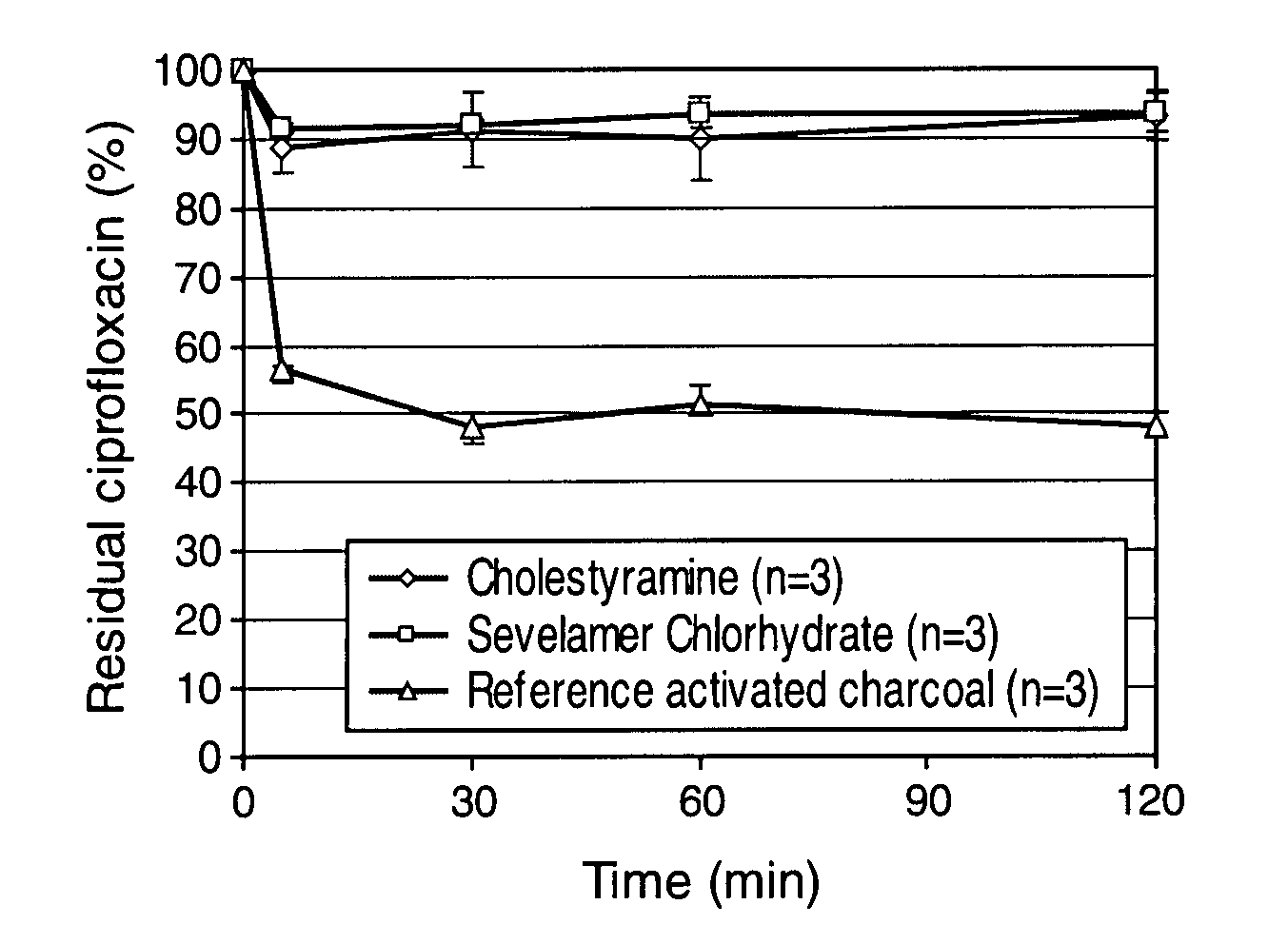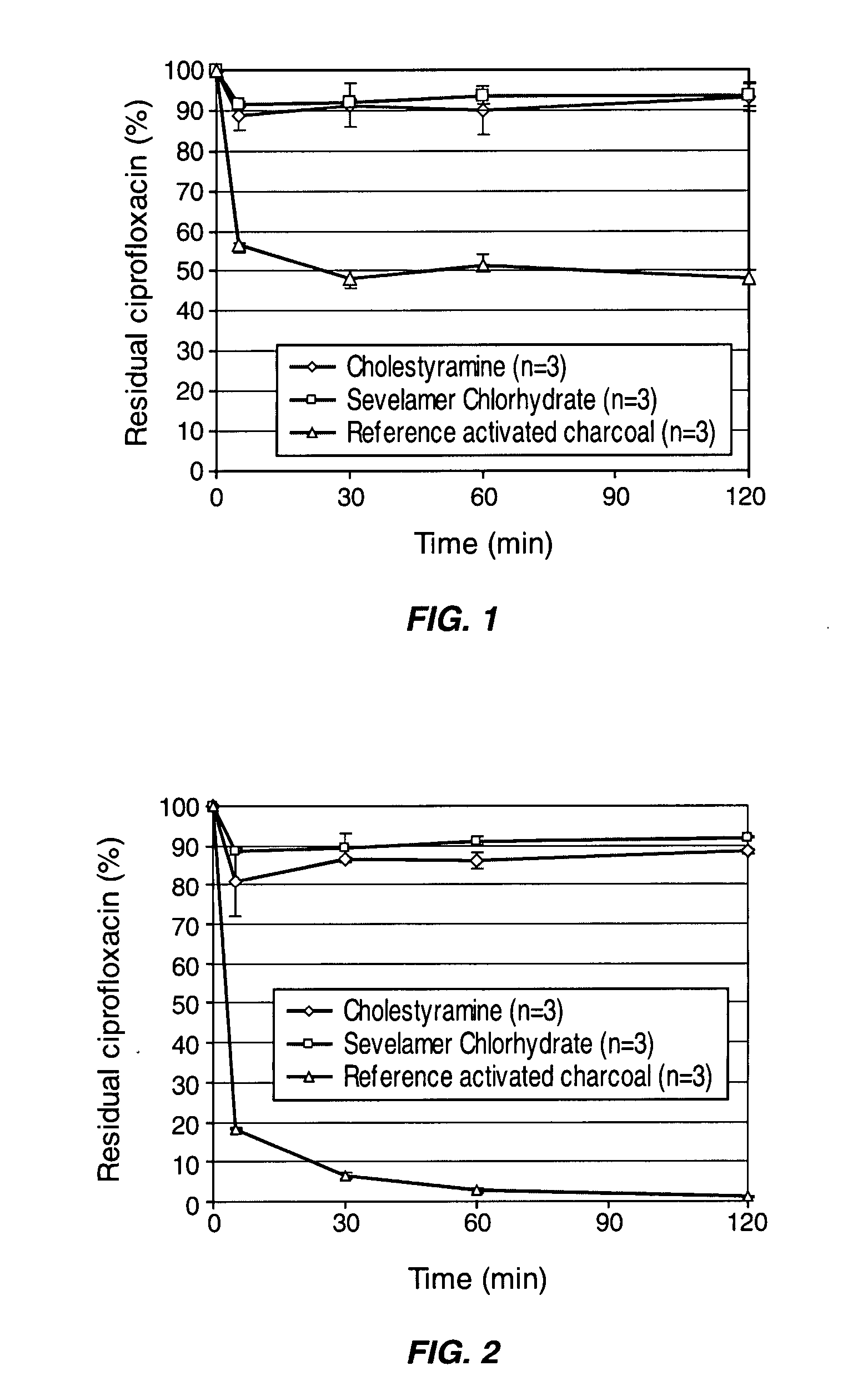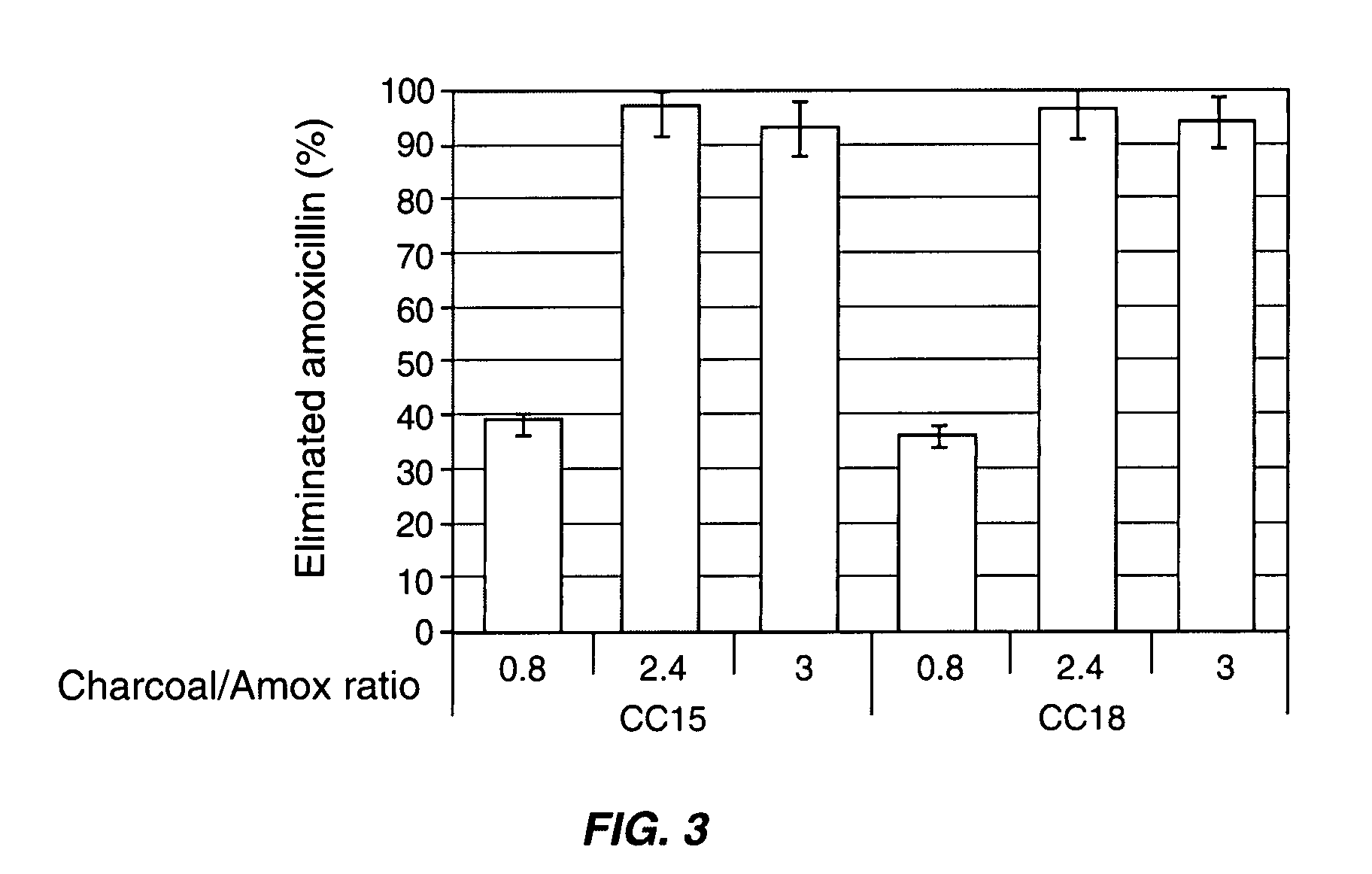Site-specific intestinal delivery of adsorbents, alone or in combination with degrading molecules
a technology of adsorbents and intestinal tracts, which is applied in the direction of antibacterial agents, drug compositions, peptide/protein ingredients, etc., can solve the problems of side effects in the gastrointestinal tract, and achieve the effects of rapid release, simple and robust, and rapid effect on the removal of antibiotic activity
- Summary
- Abstract
- Description
- Claims
- Application Information
AI Technical Summary
Benefits of technology
Problems solved by technology
Method used
Image
Examples
example 1
Adsorption Efficiency in Simulated Colonic Conditions with Unformulated Adsorbents
[0070] In early works (see for example, PCT application No. PCT / EP2006 / 005629, the contents of which are hereby incorporated by reference), adsorption of amoxicillin and ciprofloxacin by three pharmaceutical grade adsorbents (activated charcoal, attapulgite and kaolin) was tested under simulated colonic conditions by determining residual concentration of antibiotics using HPLC. The simulated colonic medium (SCM) used for these experiments was a solution made of HEPES (2.383 g / L) and NaCl (8.474 g / L) adjusted to pH 6. Adsorbents were incubated in SCM at 37° C. under gentle tangential stirring. At desired time points, suspensions were collected and centrifuged at 10,000 RPM using a micro-centrifuge. The supernatant was filtered on a syringe driven filter unit (Millex®-HV, 0.45 μm, PVDF, 4 mm; Millipore, France) and assayed for their antibiotic concentration using HPLC. Control samples containing, or not...
example 2
Comparison of the Adsorption of Ciprofloxacin by Synthetic Resins and Activated Charcoal
[0077] The capacity of two commercially available synthetic resins to adsorb ciprofloxacin in simulated colonic conditions was compared to that of activated charcoal. The two resins tested were ionic exchange resins, cholestyramine (Sigma-Aldrich, France) and sevelamer chlorhydrate (Renagel®, Genzyme, USA), that are generally used to treat complications of renal failures. The pharmaceutical grade activated charcoal was from Norit (Belgium). The simulated colonic medium (SCM) used for these experiments was a solution made of HEPES (2.383 g / L) and NaCl (8.474 g / L) adjusted to pH 6.4.
[0078] 3.75 mg or 9 mg of the synthetic resins or the activated charcoal were incubated in 50 ml of the colonic medium containing 3.75 mg of ciprofloxacin at 37° C. under gentle tangential stirring. At desired time points, aliquots of the suspensions were collected and centrifuged 5 min at 13,000 RPM using a micro-cen...
example 3
Adsorption of Antibiotics by Various Activated Charcoals
[0080] The adsorption of ampicillin, amoxicillin and ciprofloxacin was tested with various activated charcoals from different origins with distinct physical and chemical characteristics in simulated colonic conditions. Table 1 below shows the physical and chemical characteristics of seven pharmaceutical grade charcoals from different manufacturers.
TABLE 1physicochemical characteristics of pharmaceuticalgrade charcoals from various manufacturers.Point ofSurfaceSpecificPorousZeroacidicsurfacevolumeChargefunctionDensityManufacturerReference(m2 / g)(mL / g)(pH)(meq / g)ApparentRealNoritCC1518030.954.3629.70.252.49NoritCC1616630.803.4725.10.292.36NoritCC1715210.903.5326.20.232.34HänselerCC1816740.655.7116.10.271.94MerckCC1915170.853.4228.50.221.95ProlaboCC2013120.553.8822.50.311.99CertaCC2114190.853.1727.90.252.07
[0081] The proportion of ampicillin, amoxicillin or ciprofloxacin adsorbed after 60 min of incubation onto the seven pharmac...
PUM
| Property | Measurement | Unit |
|---|---|---|
| Volume | aaaaa | aaaaa |
| Volume | aaaaa | aaaaa |
| Volume | aaaaa | aaaaa |
Abstract
Description
Claims
Application Information
 Login to View More
Login to View More - R&D
- Intellectual Property
- Life Sciences
- Materials
- Tech Scout
- Unparalleled Data Quality
- Higher Quality Content
- 60% Fewer Hallucinations
Browse by: Latest US Patents, China's latest patents, Technical Efficacy Thesaurus, Application Domain, Technology Topic, Popular Technical Reports.
© 2025 PatSnap. All rights reserved.Legal|Privacy policy|Modern Slavery Act Transparency Statement|Sitemap|About US| Contact US: help@patsnap.com



